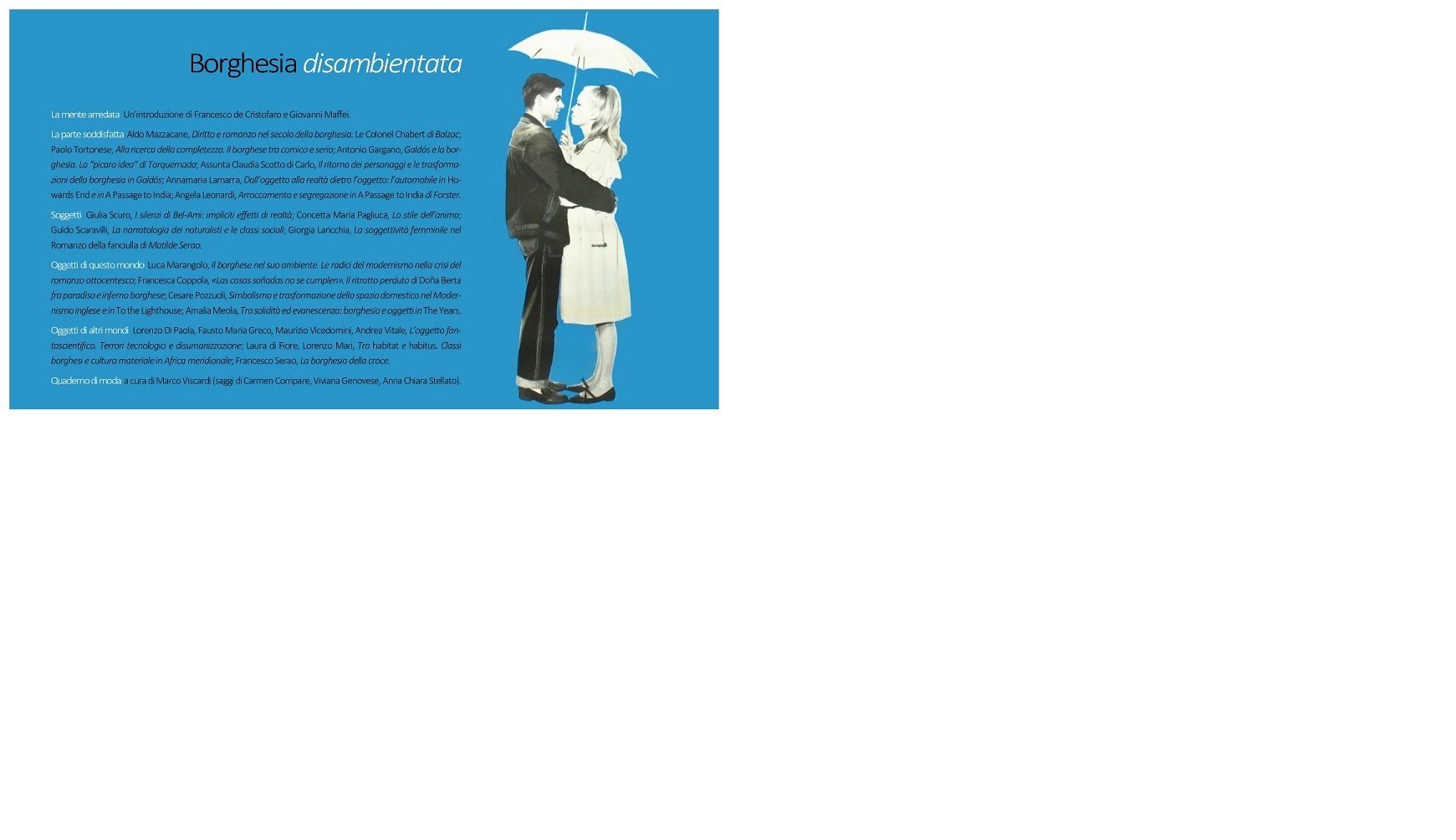Tra habitat e habitus. Classi borghesi e cultura materiale in Africa meridionale
DOI:
https://doi.org/10.13133/2239-1983/13997Abstract
Analysing the rise of Southern African middle classes as a specific case study, the aim of this paper is to emphasize the plural and entangled histories of black middle classes within two national contexts. The analysis of the dichotomy between the white rural middle class (as especially recognizable in the history of South African Boers) and the black urban Lumpenproletariat as structuring the political and cultural history both of South Africa and Zimbabwe, in fact, is eventually challenged by the rise of black middle classes in the postcolonial and post-apartheid era. As these processes are rooted in a peculiar habitat such as the farm and exerted through a specific and yet all-encompassing habitus, this paper will retrace these aspects in the history of Southern African literature in English, focusing on recent novels such as John Maxwell Coetzee’s Disgrace (1999) and Peter Godwin’s When A Crocodile Eats The Sun (2006).
Downloads
Published
How to Cite
Issue
Section
License
Gli autori che pubblicano su questa rivista accettano le seguenti condizioni:- Gli autori mantengono i diritti sulla loro opera e cedono alla rivista il diritto di prima pubblicazione dell'opera, contemporaneamente licenziata sotto una Licenza Creative Commons - Attribuzione che permette ad altri di condividere l'opera indicando la paternità intellettuale e la prima pubblicazione su questa rivista.
- Gli autori possono aderire ad altri accordi di licenza non esclusiva per la distribuzione della versione dell'opera pubblicata (es. depositarla in un archivio istituzionale o pubblicarla in una monografia), a patto di indicare che la prima pubblicazione è avvenuta su questa rivista.
- Gli autori possono diffondere la loro opera online (es. in repository istituzionali o nel loro sito web) prima e durante il processo di submission, poiché può portare a scambi produttivi e aumentare le citazioni dell'opera pubblicata (Vedi The Effect of Open Access).


